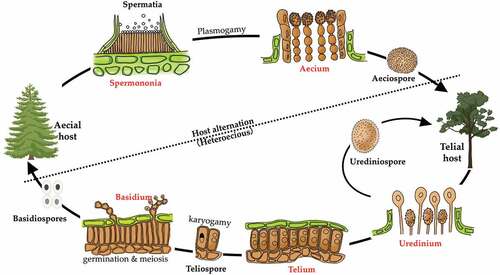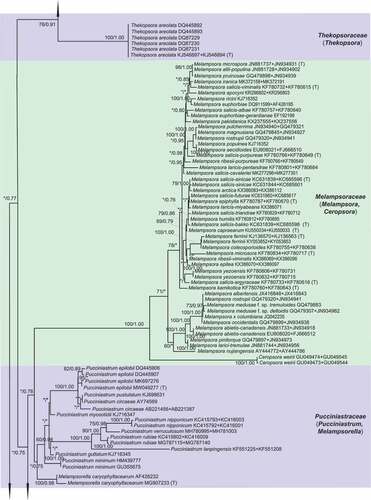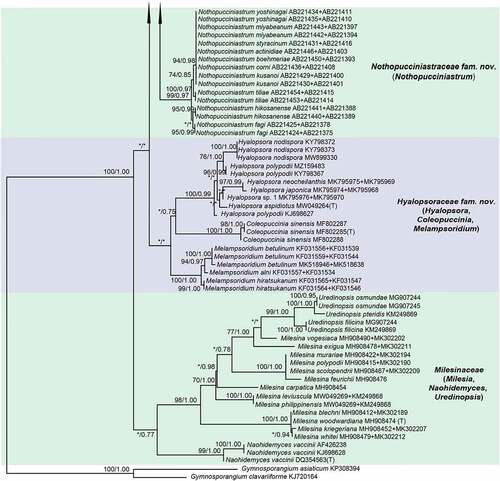Figures & data
Table 1. rDNA sequence data from selected genera in the Melampsorineae suborder of Pucciniales order used for phylogenetic studies. *: Sequence data in bold are generated by our current and previous taxonomic studies.
Figure 1. Multilocus phylogenetic tree of the Melampsorineae suborder in the Pucciniales order. Support values indicated at nodes. Bayesian posterior probabilities ≤ 50% and Maximum Likelihood bootstrap (ML) ≤ 50% were indicated by dash line (–). Family and generic names are listed after each taxon.
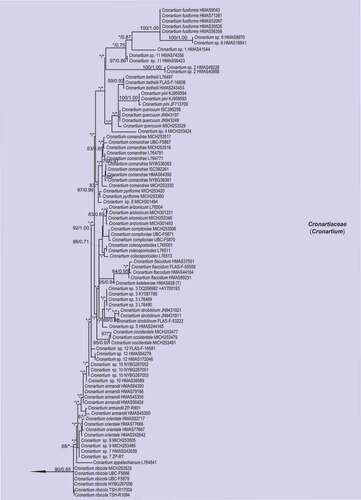
Figure 2. Correlation of phylogeny and morphological criteria used of family delimitation. Dash line (–) in the phylogenetic tree indicated the family or genera lacks of one certain spore stage.
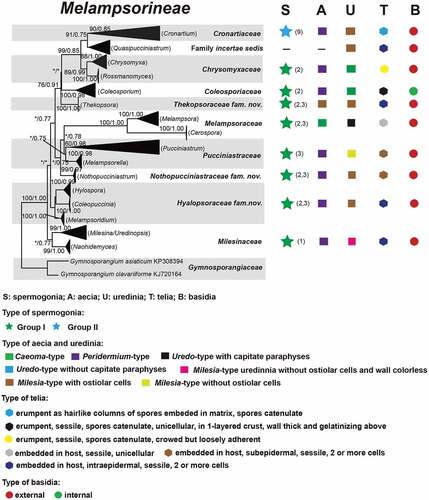
Figure 3. Taxonomic importance of morphological characters in different spore stages during the whole life cycle in the rust fungi is illustrated. The spore-producing structures, i.e. basidia, spermogonia, aecia, uredinia and telia are indicated in red colour and bold, while the spore morphologies, i.e. basidiospores, spermatia, aeciospores, urediniospores and teliospores, are indicated in black colour and bold.
